
We are already used to various weather surprises. Do they affect fruit and berry crops? Whether you need help for the plants? What lessons should be learned for the future?
Precipitation and fungal diseases
Negative factors include excess precipitation, which leads to an outbreak of various fungal diseases.
Apple and pear scab
The most dangerous of the fungal diseases of fruit – Apple and pear scab. It affects flowers, ovaries, fruits, leaves, shoots and can completely destroy the crop. Diseased fruits crack, rot and fall off. Leaves with a strong development of infection dry up and fall prematurely, reducing the winter hardiness of trees due to a lack of photosynthetic products.
What is a scab, clearly seen in the photo below. Especially affected by it are Apple varieties ‘Melba’, ‘Mantet’, ‘Lobo’ and many others, as well as old varieties of pears – ‘Seedless’, ‘bergamot autumn’, etc.
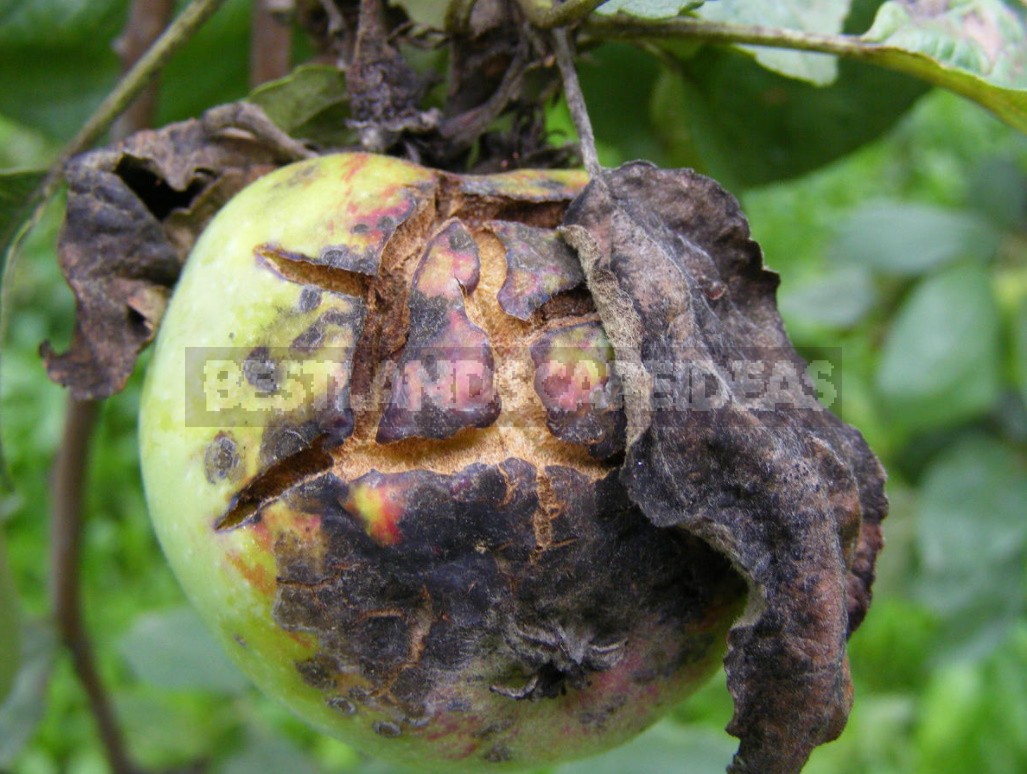
To combat scab, it is usually recommended to repeatedly spray trees with various chemicals, which is not safe for human health and the environment (useful insects, birds, etc.). In addition, it is established that the pathogen gradually gets used to them, and scab becomes even more aggressive.
But there are immune species that are used in targeted breeding work to breed varieties that are resistant to scab and combine this valuable feature with sufficient winter hardiness, good fruit taste and other necessary qualities. They are now quite a lot, and on a provocative epiphytotic background, they have confirmed their immunity to the disease. In the photo below — one of the author’s elite forms of Apple trees with absolutely clean fruits and leaves.
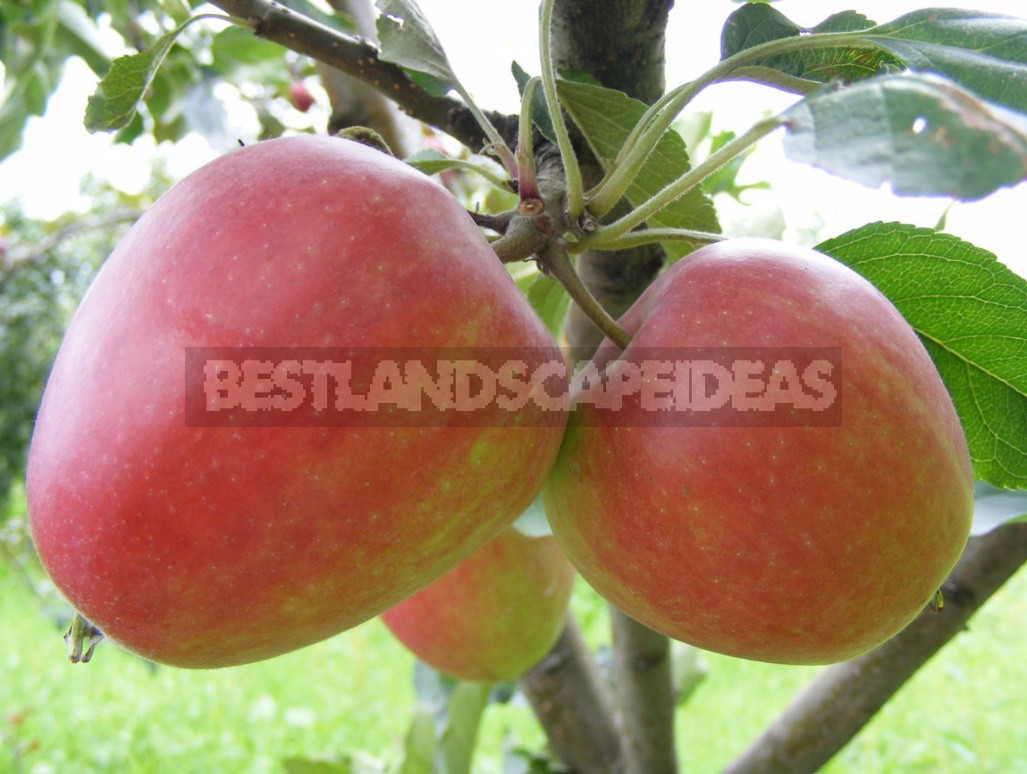
And the ‘Thumbelina’ pear, which is resistant to scab, also does not have ugly spots after frost, thanks to the completely rusted dense skin of an attractive Golden color (varietal feature).
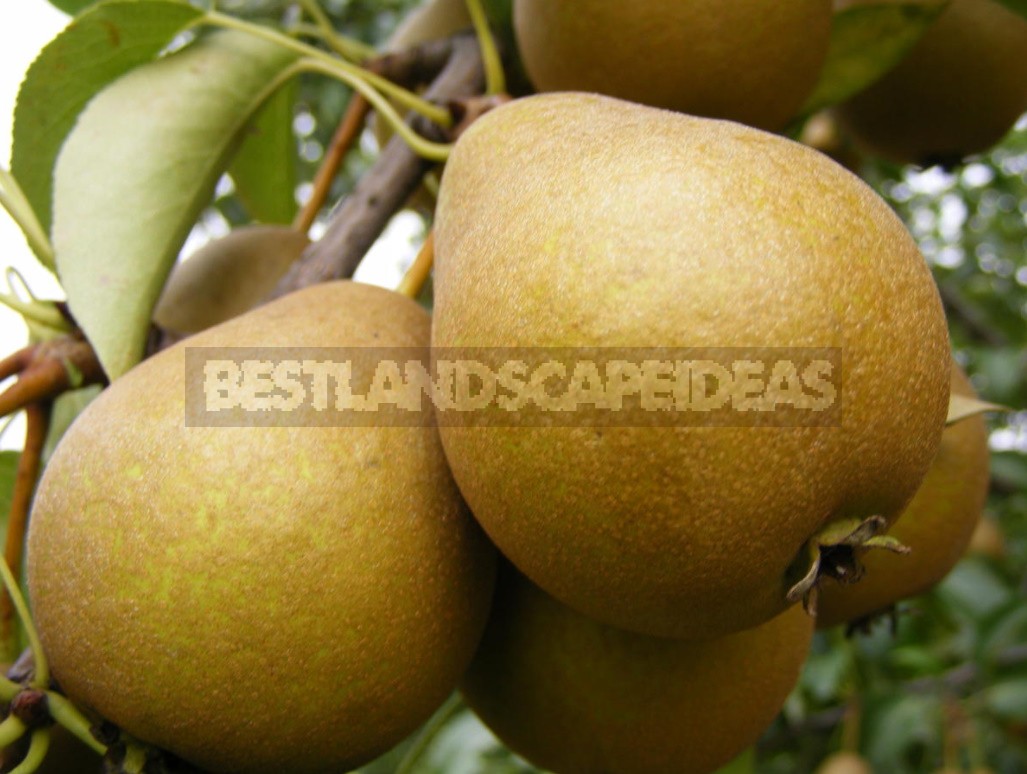
Unfortunately, even scab-resistant varieties can be affected by other diseases.
Sooty mushroom and its causes
Many gardeners are surprised by the dark mottled coating on the fruits of Apple and pear trees, similar to soot or soot, not washed off even with warm water and soap. This is a sooty fungus, whose name comes from the appearance of the disease.
A soot-like coating covers the surface of the fruit in mid-to late-season, but it initially appears on the bark of branches and trunk, which often goes unnoticed, and then on leaves and shoots. The fruits are suitable for consumption, but their commercial appearance is reduced and the storage period is reduced. Much more dangerous is the sooty fungus for the tree itself, since the defeat of the leaves and other parts leads to its oppression, reducing winter hardiness.
The mushroom itself does not appear in an empty place. It usually settles on trees with large wounds (after pruning or due to broken branches), left without covering up with garden brew. The juice flowing down the bark contains organic substances that are an excellent breeding ground for various microorganisms and fungal spores, including sooty ones. Rapidly multiplying, they cover the surface of the bark with their hyphae in the form of a black plaque and clog its stomata (microscopic holes). This disrupts the necessary air exchange and causes the accumulation of photosynthetic products in the tissues and organs of the tree, which leads to its suppression.
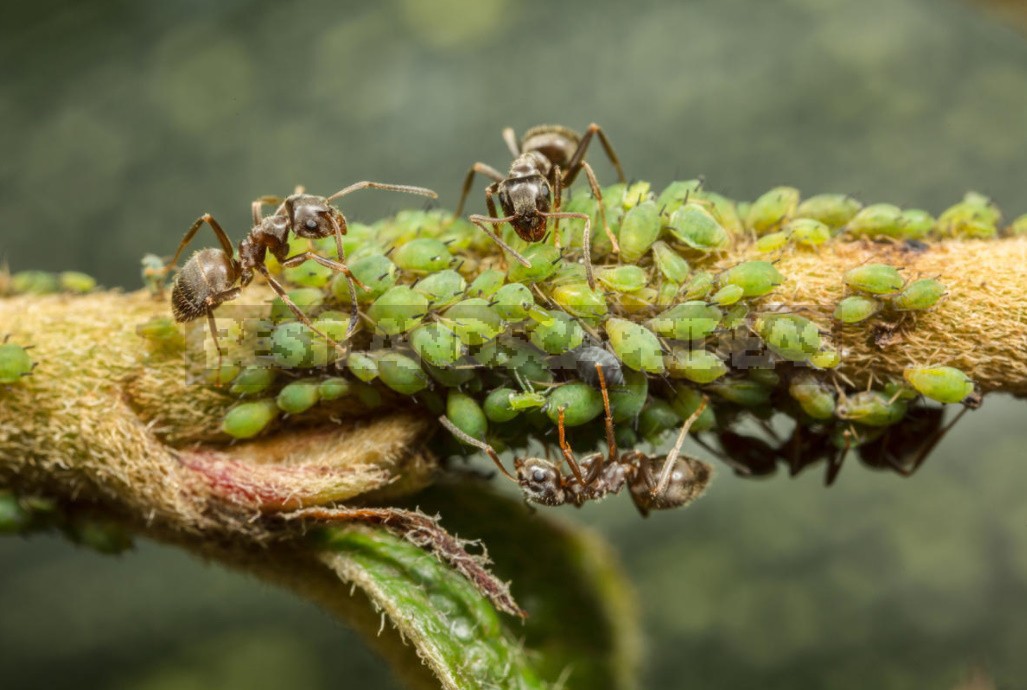
But most often, the sooty fungus is the result of damage to trees by aphids or Copperheads. These dangerous insects are harmful not only by themselves, as they suck the juices from plants. They secrete a sweet, sticky liquid called pad, or honeydew, which ants love, and their running through the branches is a signal for aphids to appear. But most importantly, it is also a ready-made nutrient medium for sooty mushrooms.
The dominance of aphids and Copperheads is most often in hot, dry years. Accordingly, the sooty fungus also settles on trees, and it is most noticeable in conditions of wet and warm weather, which is especially favorable for the spread of fungal diseases.
Other diseases, prevention and control of fungal diseases
Shading of trees and thickening of their crowns also contributes to the disease. Look: these two fruits are “twin brothers” from the same tree. The one with spots is from the middle of a dense, unventilated crown, and the clean one is from a peripheral, well – lit branch.
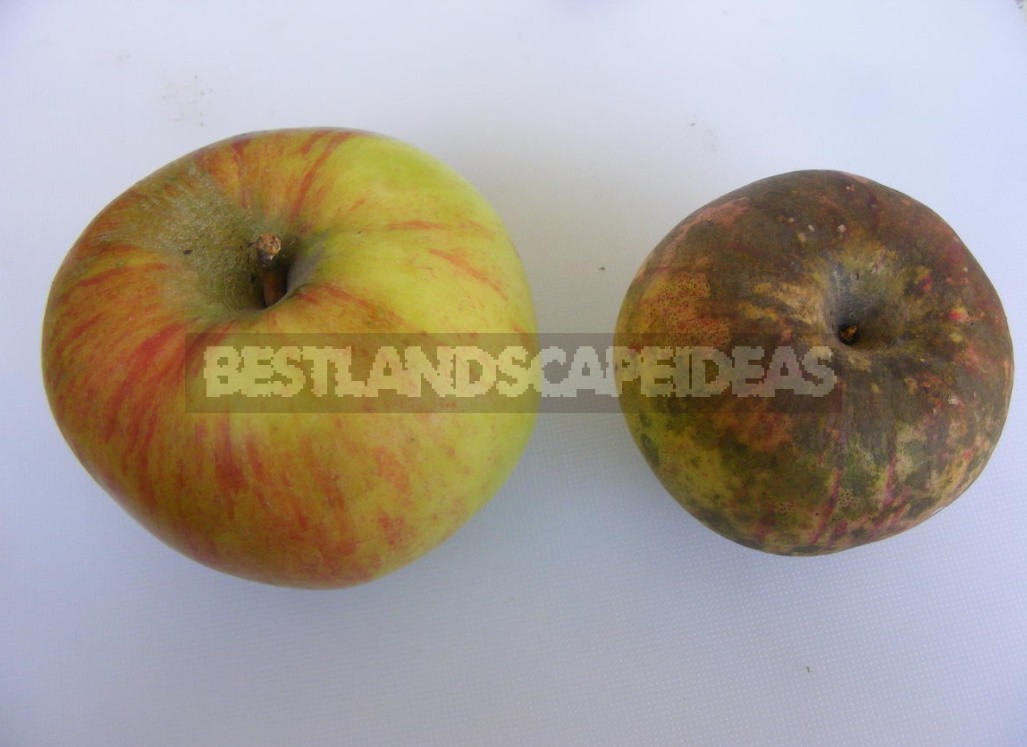
The next photo also shows a fungal disease with similar causes. This is a fly-eater: on the surface of the fruit there are groups of small black dots that resemble the excrement of flies. It often happens simultaneously with the sooty mushroom.

Conclusions suggest themselves: to get rid of fungal diseases of fruit trees, first of all, preventive measures are needed — the correct formation of tree crowns with good sunlight and ventilation; timely (before the start of SAP movement) pruning of trees and covering up wounds with garden brew; the use of various ways to protect plants from aphids and Copperheads (applying fishing belts to trunks and branches, attracting useful insects-entomophages, etc.).
It is often found against the background of adverse weather conditions and an abundance of fruit rot in Apple, pear, plum, plum and other crops. The spread of the disease is facilitated by fruit cracking due to waterlogging and sudden temperature changes, as well as damage to the skin by insects. Aggravate the situation can last year’s stock of infection in the trees, so it is necessary to remove all the sick carrion and do not leave dried rot on the branches.

To combat fungal diseases of fruit crops, small-scale spraying is recommended in late autumn (after leaf fall) and early spring (before budding) with a 7% urea solution (700 g per 10 liters of water). The treatment of trees and the ground under the crowns should be very thorough.
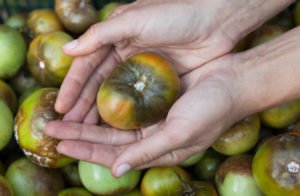
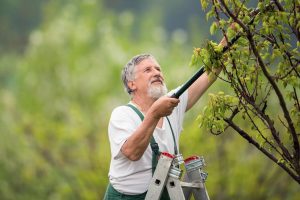
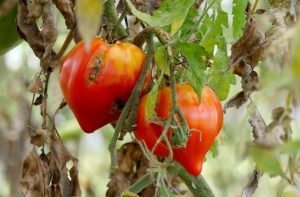
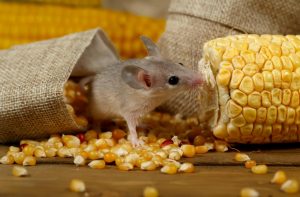
Leave a Reply